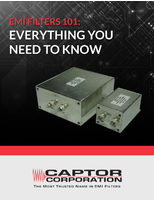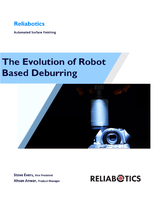Delcam to Show Latest Versions of PowerMILL and FeatureCAM at JIMTOF
Share:
Delcam will show the latest versions of its PowerMILL and FeatureCAM CAM systems on booth W0021 at the JIMTOF 2006 exhibition to be held in Tokyo from 1st to 8th November. In addition to the on-screen demonstrations on the Delcam stand, a number of machining demonstrations will be undertaken on the stands of Delcam's machine tool partners. FeatureCAM will also be demonstrated by reseller FCS International on booth W0017.
PowerMILL 7 includes a wider range of five-axis strategies for both roughing and finishing, three-axis swarf machining and parametric surface finishing, together with faster calculation times, improved point distribution and easier data management.
The range of five-axis roughing strategies has been increased to match the wide list of options previously available for five-axis finishing. It now includes machining to or from a point, orientation through a line or curve, and programming using a reference surface.
A new three-axis spiral roughing strategy can be used on suitable geometry instead of offset machining. Using a spiral toolpath allows the overall machining time to be reduced by minimising the number of air moves. In addition, a more consistent load can be applied to the cutter so limiting wear and reducing breakages
New strategies for finish machining include parametric offset machining, three-axis swarf machining and interleaved constant Z. In parametric offset machining, the number of toolpaths used over a surface of varying width is kept constant and the stepover between the toolpaths is varied within preset limits. This approach gives a better finish by avoiding sudden changes of direction that can leave marks on the surface
Three-axis swarf machining can be used to finish vertical walls. Using the side of the tool produces a better finish than cutting the wall in a series of operations at different Z levels. In addition, three-axis swarf machining with tapered tools can be used to finish flat walls with a draft angle of the same value as the angle of taper on the cutter.
For several releases, PowerMILL has been able to generate 3D offset toolpaths for finishing of flatter areas and constant-Z toolpaths for steeper surfaces in a single calculation. The new interleaved constant-Z option gives better control of the overlap between the two strategies and so avoids surface defects in the intermediate areas. In a related development, the calculation of shallow boundaries has been improved so that these areas are defined more accurately.
FeatureCAM 2007 is the latest version of the Delcam's industry-leading feature-based machining software. It includes major enhancements to the software's automatic feature recognition functionality and to the range of 3D machining strategies.
In addition, FeatureCAM 2007 makes the creation and editing of toolpaths quicker, easier and more flexible. Instead of requiring the user to develop or change the feature properties and then generate or re-generate the toolpaths, FeatureCAM users can now create or edit roughing and finishing toolpaths independent of part features.
The extended functionality in FeatureCAM's automatic feature recognition technology will recognise and machine automatically complex holes for special applications. Supplementing the wide selection of standard hole configurations already recognised by FeatureCAM, the upgraded software will enable users to specify custom hole dimensions, key geometric features, special-purpose tools and exact machining parameters. As a result, hydraulic connections, mould base fittings and other special holes will be automatically recognised and machined to desired specifications.
The new advanced machining strategies in FeatureMILL3D have enabled significant increases in calculation speeds for 3D toolpaths and improved the surface finish that can be achieved. The main requirements for advanced machining are to keep the load on the cutter as consistent as possible, and so maximise its life by reducing wear, and to minimise any sudden changes in the cutting direction that will either put excessive load on the tool or require a slowing in the feed rate. The new FeatureMILL3D strategies enable users to meet both these objectives.
FeatureMILL3D also incorporates new rest finishing options to ensure the highest possible quality of surface finish and to minimise hand finishing. These include pencil machining, in which the material remaining is removed in a single pass, and Z-level rest finishing, the preferred option for clearing material left on steep surfaces.
For further information on Delcam business in Japan, please contact:
Hiroya Manabe e-mail: manabe@delcam.co.jp
Delcam Japan
Sanhaitsu Kanda Kitamura Building 10F
30 Kanda Higashi
Konyacho, Chiyodaku
Tokyo
Japan
www.delcam.co.jp




